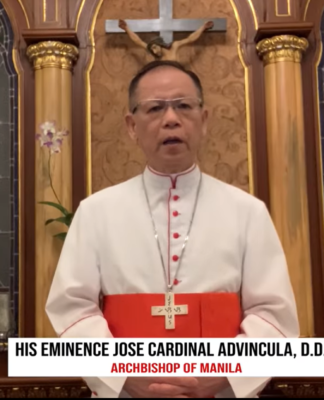
WITH the passing of the University’s first writer-in-residence, former Faculty of Arts and Letters Dean Ophelia-Alcantara Dimalanta, the administration has raised the prospect of reviving the Center for Creative Writing and Studies (CCWS), of which Dimalanta was the inaugural—and ironically enough, the closing—director.
The revival should be supported and encouraged if only to provide a fitting tribute to Dimalanta and sublime writers like her that constitute the Parnassus of Thomasian letters.
The reconstitution of the Center will also ensure the sure coming of the next generation of Thomasian men and women of letters.
In an interview with the Varsitarian after her appointment as UST’s first writer-in-residence, Dimalanta had said her appointment was an opportunity for mentoring and guiding the young. She also said that one of her responsibilities was to encourage young writers and to nurture the atmosphere of creative reading on campus.
True enough, she was able to organize the first all-Thomasian writers workshop last May.
But now that the UST’s premiere woman poet is gone, what is in store for UST’s literary future?
There will not be another Ophelia Dimalanta who has the passion and fervor to foster the creative literary environment in the campus.
And with the abolition of the CCWS in 2008 because of austerity measures (why, oh why, are the arts and humanities the first to be sacrificed during crisis and belt-tightening!), the University may have dealt a death blow to the future of Thomasian literature.
It is creative havens such as the CCWS, the old Philets (“the biggest little college in the Philippines whose students and alumni cow into fear other schools because of the former’s superiority in arts, humanities, and writing, an admission made even by Conrado de Quiros), the UST fine arts and architecture programs, and the Varsitarian (the only school paper to have an entry in the Cultural Center of the Philippines Encyclopedia of the Arts for having produced top writers and artists) where creativity and genius are nurtured and nourished.
Consider Thomasian literary titans such as F. Sionil Jose, Bienvenido Lumbera, Cirilo Bautista, Wilfrido Nolledo, Cristina Pantoja Hidalgo and Rogelio Sicat, and such artists as J. Elizalde Navarro (a National Artist), Danny Dalena, Cenon Rivera, and Julie Lluch! Looking at them, one would realize that Thomasian literary and artistic greats have always been associated with Philets, the humanities curriculum, the arts programs, and the Varsitarian—or all of these!
But the legacy and reputation have been waning and paling for some time, and the demise of the CCWS has worsened the situation. The centralization of research centers by the UST administration should have spared the creative writing center.
As Dimalanta had said, the output of the creative writing center is different with the research centers on the sciences and technology.
The UST administration should have considered UST’s literary glory as the birthplace of some of country’s brightest and most illustrious men and women of letters and the arts. At the least, the UST administration should have considered the efforts of Dimalanta to mold young Thomasian writers. What seems to be the more appalling setting is that budding creative Thomasian creative writers hardly get support from the University!
Also the move of several deanships to drop humanities and literature subjects might have added to Dimalanta’s dismay. Moreover, is Dimalanta’s book on Philippine contemporary literature still being used in the University nowadays? Worse, does any of her work form part of the undergraduate curricula and textbooks on literature? Alas, the UST curriculum had long killed Dimalanta off before she succumbed to a stroke Nov. 4, 2010!
Now that Dimalanta and others of her ilk (such as the well-loved teacher of literature, Milagros Tanlayco) are gone, the best thing that the University could do is to continue their passion and mission to train and nurture aspiring writers and artists in the University.
If not, UST may be heading for the dark age of the humanities.
Now that Ophelia Dimalanta has died, a resurrection should be in order—the resurrection of the CCWS and the return of the exiled regime of letters and the arts to Thomasian soil. Let Thomasian ground be hallowed again by the spirit of the humanities and the Catholic imagination!
















